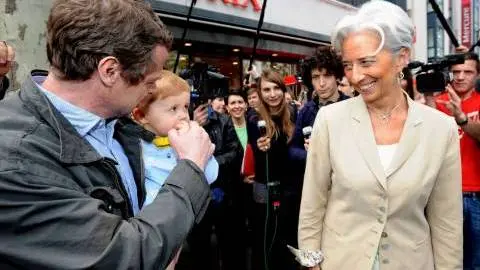Three big questions on China’s stimulus blitz
We take a look at three questions after policymakers in China unleashed a coordinated monetary and fiscal stimulus push
What’s behind China’s stimulus blitz?
Chinese policymakers have largely preferred piecemeal and targeted measures since exiting the pandemic era, as economists were divided between the risks of bubbles emerging and inflation risk versus the risks of an economic downturn. This debate clearly swung in the latter direction this year, as growth momentum waned and weak confidence became pervasive through much of the economy. While we’ve seen numerous policies targeting stabilisation this year, the moves starting in late September marked the most aggressive push yet.
We wrote in a note last month that there would be increased short-term urgency for rolling out stimulus after the weak data from the last few months prompted a call from President Xi to “strive to achieve the full-year economic and social development goals" last month. Policymakers quickly moved to answer this call, unleashing successive stimulus measures in the biggest post-pandemic policy blitz which triggered a furious market rally in Chinese equities.
What is included and what is still to come?
The first part of the stimulus package was from the People's Bank of China, which not only provided a 20bp 7-day reverse repo rate cut (the biggest cut since 2020), 30bp MLF cut, and 50bp RRR cut, but also introduced new measures as well.
Property sector support included a long-rumoured 50bp cut to existing mortgage rates which provides a little relief to households, expanding funding a re-lending programme to banks from 60% of loan principal to 100% for lending to State-Owned Enterprises to acquire unsold properties, and cutting the required downpayment ratio for second home purchases from 25% to 15%.
Additionally, a RMB 500bn swap facility was set up to provide liquidity support for stock purchases, which helped spark the equity market rally.
The second part has been what should be the start of a broader fiscal policy support rollout. The National Development and Reform Commission announced that RMB 100bn of next year's budget would be brought forward to use in 4Q. We saw Shanghai announce a RMB 500mn consumption voucher programme, potentially setting an example for other cities to follow; a similar initiative in Hong Kong was quite effective in boosting consumption during the pandemic. Aside from this, there was also an announcement of a one-off cash handout to low-income households.
Moving forward, there has been extensive market discussion over plans for potentially trillions of RMB of special bond issuance to support further measures. We’re expecting further fiscal stimulus to continue to roll out in the coming weeks. We also still see room for further monetary policy easing in the months ahead with both interest rate and RRR cuts still on the table before year end.
PBoC has made aggressive moves to shore up growth (%)

Is this the big turning point markets have waited for?
We’ve seen a lot of hyperbole in the aftermath of the stimulus. Some in markets have cheered the moves as China’s “whatever it takes” moment, referring back to Mario Draghi’s famous speech back in 2012. It remains difficult to say for certain if this is the case – in our view, the policies announced represent a good step in the right direction, but the outcome still depends on the strength, speed, and effectiveness of upcoming fiscal policy support to build upon the initial momentum. At the other extreme, we've seen some rather fatalistic takes as well, especially in the aftermath of an NDRC press conference which fell short of many investors' expectations to build on the momentum.
Taking a step back from the short-term reactionism, it's important to note that the most recent measures appear to mark several shifts in policy stance. First, rather than slowly rolling out a series of piecemeal measures, bundling many moves concurrently has clearly had a better messaging effect. Second, the shift towards demand-side fiscal stimulus will certainly be cheered by economists, and consumption vouchers as well as cash handouts should be more effective than niche trade-in policies.
The stimulus comes too late to impact the third quarter numbers, which we expect to finish on the weak side. However, the measures, along with expected further fiscal policy support, have raised our expectations for 4Q and 2025 growth. After what will likely be a weaker-than-expected third quarter, it remains challenging to hit 5% growth for the year, but full-year growth falling a little short of that should still be sufficient to achieve the “around 5%” target. A downgrade of the third quarter and upgrade of fourth quarter growth leaves our 2024 4.8% annual growth forecast unchanged, but we are upgrading our 2025 forecast from 4.6% to 4.8%.
This publication has been prepared by ING solely for information purposes irrespective of a particular user's means, financial situation or investment objectives. The information does not constitute investment recommendation, and nor is it investment, legal or tax advice or an offer or solicitation to purchase or sell any financial instrument. Read more
Download
Download article
10 October 2024
ING Monthly: Central bankers left holding the baby This bundle contains 14 Articles